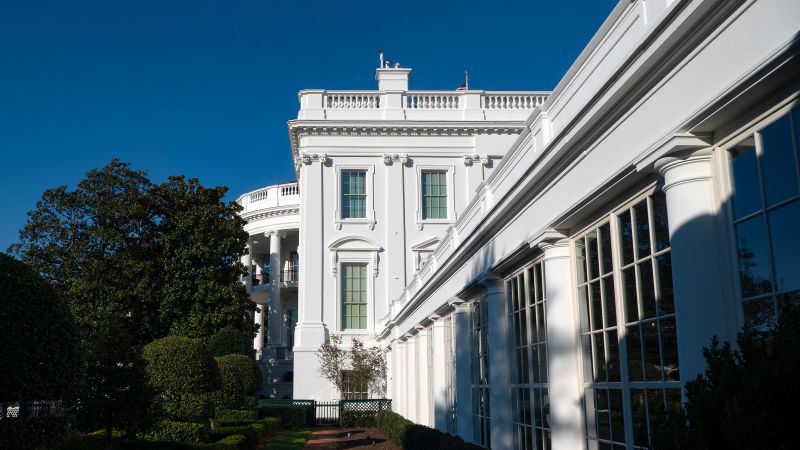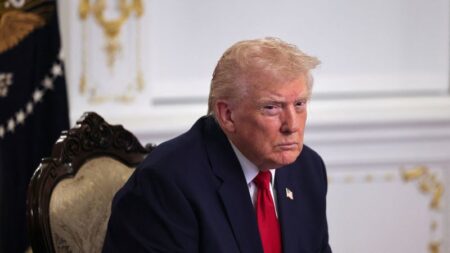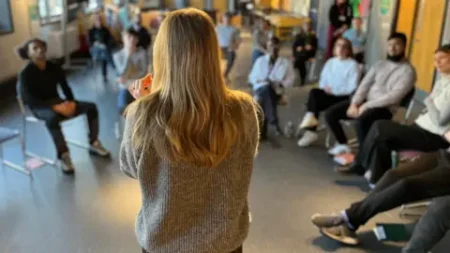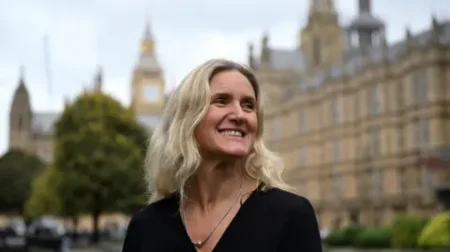President Donald Trump’s ambitious plan to enhance the entertaining capabilities of the White House is poised to create significant short-term disruptions for Americans seeking to explore this historical landmark. The initiative centers around the construction of a 90,000-square-foot ballroom, which is set to replace the current footprint of the East Wing. This endeavor highlights a larger vision to modernize and expand the iconic structure, but it also poses challenges for public access.
The White House serves as more than just a residence or workplace; it stands as a museum and a symbol of democracy. It is the only head of state’s home globally that allows public entry most days, welcoming hundreds of thousands of visitors annually. Tour participants have the unique opportunity to visit historic rooms such as the Blue Room, where President Grover Cleveland married Frances Folsom, and the Red Room, which was frequented by First Lady Dolley Madison. The Diplomatic Reception Room also holds prominent significance, having been the stage for President Franklin Delano Roosevelt’s famous “fireside chats,” which connected him with the American public during tumultuous times.
However, starting next month, the construction phase of Trump’s ballroom is expected to impact public tours significantly. Reports suggest that tour bookings have been temporarily halted, a decision that stems from the anticipated disruption to the current tour screening process and entry points. This construction project represents a departure from the previous attempts over the last two decades to establish a permanent visitor center, all of which had been stymied by funding deficiencies from Congress and the Department of the Interior.
Currently, visitors to the White House, except for invited heads of state, access the premises through Sherman Park—a space bordering the U.S. Treasury building. Once screened by the U.S. Secret Service at a temporary visitor center, guests enter through the East Wing, a section originally constructed in 1902, which has undergone various modifications since the Roosevelt administration. The addition of the ballroom, earmarked for the East Wing’s footprint, will necessitate adjustments to this established visitor protocol.
A representative from First Lady Melania Trump’s office, which manages tours, emphasized that although new tour bookings have been paused, **there have been no cancellations so far.** Nick Clemens, the spokesperson, pointed out that proactive measures are in place, indicating a collaborative effort among personnel from several agencies, including the White House, U.S. Secret Service, National Park Service, and Executive Residence staff. This coordination aims to maintain public access to the White House, even during construction.
While officials in charge are committed to preserving the tradition of public access, they are currently assessing how to adjust the screening process and possibly shorten the tour route while retaining the essential experiences of visiting the White House. This construction is labeled “invasive” by sources familiar with the project, suggesting that temporary screening mechanisms and renewed boundaries for Secret Service coverage will be necessary.
The rewired tour route is expected to exclude paths leading to the First Lady’s office, the East Colonnade, and the area known as “Booksellers Hall.” Nevertheless, it is anticipated that visitors will still have access to several historic rooms, such as the State Floor, State Dining Room, and the Diplomatic Reception Room.
As the construction nears its commencement in September, state officials disclosed that they plan to complete the ballroom before the conclusion of Trump’s presidency. The funding for this project is expected to come from private donors, and the cost estimate has been pegged at approximately $200 million. Despite the alterations to the touring process, it’s important to note that the administration aims to ensure a smooth experience for visitors.
Officials from various departments, including the White House and the National Park Service, are interested in rapidly reassessing tour logistics, a task that often encounters delays in practical applications. Historical upgrades, much like those introduced during the Biden administration, typically take years to develop and implement. These enhancements have featured more interactive elements intended to enrich the visitor experience, indicating a progressive approach to public interaction at the White House, even amid construction challenges.











